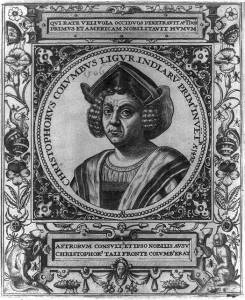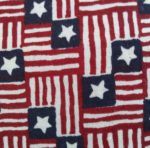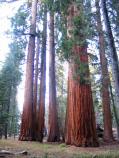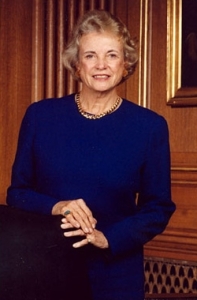 Christopher Columbus started his second voyage to the New World in 1493. This time he had seventeen ships and close to 1,500 men. He discovered land on November 3, 1493 and still believed he had reached India. In all he made four voyages to the new world.
Christopher Columbus started his second voyage to the New World in 1493. This time he had seventeen ships and close to 1,500 men. He discovered land on November 3, 1493 and still believed he had reached India. In all he made four voyages to the new world.
Vasco Nunez de Balboa claimed the Pacific Ocean and “all shores washed by it” for Spain in 1513. Idea: Children could look on a world map and find out just how big a territory Balboa really did claim.
 First United States Congress met in 1789. One of their first acts was to start the process to adopt the Bill of Rights. Congress told George Washington to submit copies of the Bill of Rights to all the states so that each state could begin its ratification process. New Jersey on November 20, 1789, became the first state to ratify the document. The Bill of Rights was finally adopted on December 15, 1791, when Virginia ratified the amendment. Older children can find out more at: Bill of Rights.
First United States Congress met in 1789. One of their first acts was to start the process to adopt the Bill of Rights. Congress told George Washington to submit copies of the Bill of Rights to all the states so that each state could begin its ratification process. New Jersey on November 20, 1789, became the first state to ratify the document. The Bill of Rights was finally adopted on December 15, 1791, when Virginia ratified the amendment. Older children can find out more at: Bill of Rights.
 Amendment Twelve to the Constitution was adopted in 1804. Prior to the amendment, the presidential candidate with the most votes became president. The one with the next amount of votes became vice-president. This system did not always work well. The amendment changed the process so that the president and vice president are a team. Older children could learn more at: Amendment Twelve.
Amendment Twelve to the Constitution was adopted in 1804. Prior to the amendment, the presidential candidate with the most votes became president. The one with the next amount of votes became vice-president. This system did not always work well. The amendment changed the process so that the president and vice president are a team. Older children could learn more at: Amendment Twelve.

Sequoia National Park
Sequoia National Park was created in 1890. Located in central-southern California, the park encompasses over 400,000 acres. Known for its magnificent sequoia trees, the park is also home to Mount Whitney, the tallest mountain in the contiguous United States. Children can visit the park’s website at: Sequoia. Children could compare the sequoia to other types of trees.
Sandra Day O’Connor became the first woman Supreme Court Justice when she was sworn in in 1981. She retired January 31, 2006. She died December 1, 2023. Children could learn more about her at: Sandra Day O’Connor. She founded a website to help students better understand government: https://www.icivics.org/.
